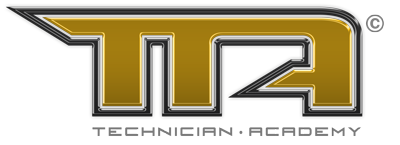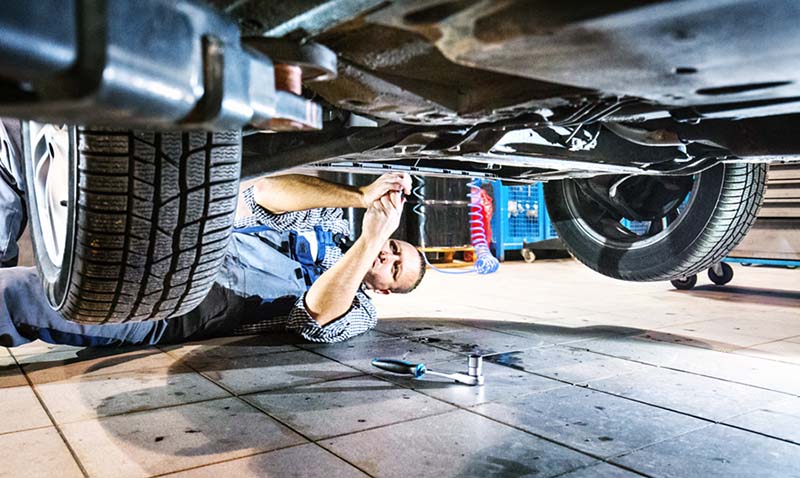Overview
Fuel lines are subject to fail over time and have become more complicated than older model vehicles. This is due to the fuel injection systems used in today’s vehicles.
Fuel injected vehicles use fuel line pressures in the neighborhood of 45 to 60-PSI, whereas early model carbureted vehicles use only 4 to 8-PSI.
On top of that, today’s vehicles have a larger number of lines, a variety of different fittings, flexlines. Many are also now using nylon lines as opposed to steel. In many cases, fuel filter and fuel line to engine quick connectors require special tools to remove.
Spring locks and nylon safety clips have become commonplace. The spring lock type of connector comes in a variety of sizes and requires a tool that inserts into the connector and lifts the spring over the flare to release the fitting.
Tool needed to Repair Nylon Fuel Line
Nylon lines tend to break near the fuel filter due to the twisting and force necessary to remove it. Regardless of the placement of the break, a nylon repair tool is necessary to repair the line.
Mostly all auto parts stores sell a repair kit capable of repairing any size nylon line. It consists of two opposing blocks with multiple size holes for any size line, a gun to hold the blocks, and a nylon-tubing cutter. The kit is necessary to hold the lines securely while a tapered connector with three step-downs presses into the nylon fuel line.
Nylon fuel lines and all the connectors are available at auto parts stores. The connectors come with sufficient pigtail for secure repairs.
The Repair Procedure for Nylon Fuel Lines
- Keep all sources of ignition away from the area to prevent accidental fire.
- Never, under any circumstances, use an electric tool of any kind (as recommended in some forums) when working on a fuel line. If one drop of fuel or vapor contacts the arc from the electric motor, you will definitely be an unhappy camper for the last time.
- Find a wood screw large enough to thread into the nylon fuel line when removed.
- Place a drain pan under the area.
- Use a good pair of wire cutters or a small hack saw to remove the section that needs to be replaced. Install the wood screw in the line to prevent further draining.
- Take the piece of removed fuel line and purchase the correct size line or fitting needed, along with the tapered fuel line connector.
- Hold the replacement line in position and mark where to cut the line.
- Use the nylon line cutter and remove the line.
- Place the opposing ends of the fuel lines into the block’s threaded side first. Allow 1/4 in to protrude.
- Place a small amount of oil on the tapered connector and place the connector end in one side of the fuel line. Squeeze the handle on the tool, bringing both blocks together, and align the connector with the opposing fuel line.
- Squeeze the handle until the connector is fully seated on all three steps in both ends of the fuel line. Remove the tool.
Tools to Repair a Metal Fuel Line
You will need two inexpensive special tools for this repair – a short handheld tubing bender and a tubing cutter. The cutter has two opposing cutting wheels that position over the fuel line. Rotate and tighten the tool until it cuts through the line, making a perfect cut. It is necessary to get this perfect cut in order to guarantee a leak-free connection.
Metal fuel lines are available in all sizes. If the break is at or close to the fuel filter, lines are available with a flare and threaded connector already installed, making the replacement easier.
Repair Procedure
- Place a drip pan under the area to catch any fuel that drips from the line once cut.
- To prevent constant dripping, use a small piece of rubber tubing with a block off the screw.
- Remove the broken fuel line using the tubing cutter. Make the cut as far back as necessary so there are at least 3 inches of straight line to install the compression fitting.
- Purchase the necessary length of fuel line and one compression fitting if replacing the line to the fuel filter. Purchase two compression fittings for a fuel line section. Always add 6-inches to the line for good measure in event of a mistake.
- Make any bends necessary for proper fitment.
- Hold the replacement line in place. Cut an additional inch off the original line to account for the compression fitting.
- Separate the parts of the compression fitting.
- Place one perforated cap on the original line with the threads facing out.
- Install the ferrule (ring) over the line in front of the cap.
- Push the original fuel line with the ferrule and cap into the center section of the connector. Hold the connector and push the line until completely seated into the center section.
- Thread the cap onto the center section of the connector. Keep sufficient pressure on the fuel line, insuring that it remains seated in the center section while tightening the cap.
- Install the cap and ferrule on the opposite end and tighten in the same manner.
- Turn the key on and check for leaks.

